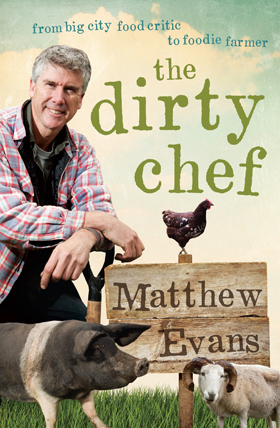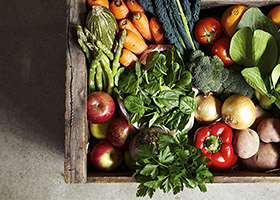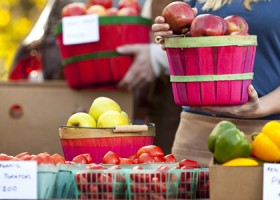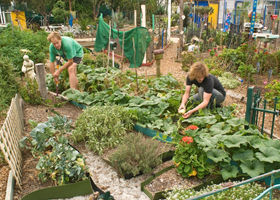
Photo credit: sbs.com.au/shows/gourmetfarmer
The Dirty Chef: From Big City Food Critic to Foodie Farmer
Author | Matthew Evans
I blame milk. That unassuming, ubiquitous white substance that we take for granted in Australia. It was cow’s milk that turned my life around, and set me on a path that has changed not only my way of living but also my world view.
Yes, that innocent stuff that comes from the bovine udder was the inspiration to help me make the move from gritty, urban inner Sydney to impossibly lush green Tasmania. From a clean and cushy life to one that involves – quite literally – mud, blood and tears. And to the non-food types among you (apparently there are some out there), the story seems more unlikely with every telling.
First, a back story. I trained as a chef. But I’m okay now. I was, post-chef, a restaurant critic for a major metropolitan daily newspaper, able to dine at the finest restaurants in the land. Mostly at someone else’s expense. I’d also eaten at Pierre Gagnaire in Paris, at Troisgros in France’s south, and in great restaurants across the US, Spain, Italy, China and Japan.
But I was also living in a 3-metre wide terrace house in a narrow lane in Glebe, a decent walk from Sydney’s CBD. The overshadowed garden I tried to establish in the backyard was destroyed by snails and rot. There was no room for chickens. I did have some good food locally, though. I had access to a fantastic greengrocer, Galluzzo’s, and a baker who made woodfired sourdough bread had just opened their shopfront a few doors down. Olives, which I harvested and pickled, grew wild in the streets, and if you timed your morning walk right, you could pick ripe figs from a tree overhanging a path next to the stormwater drains without being sprung by the tree’s owner. I was eating out at restaurants about ten times a week for work, and still relishing cooking at home.
So what about milk? Well, I grew up with decent milk. But in all my searches for the perfect flavours in the world’s great cuisines, I’d forgotten about the taste of milk for a while, until a couple of very small events had a very big impact.

My work, for the Sydney Morning Herald, involved eating at restaurants and then writing about them. You’re probably thinking, great gig if you can get it. And you’d be right, it was a great gig. But one day I was at a very swank diner in the centre of Sydney, drinking a cup of coffee that cost, and I must admit I’m vague now on the money, $11 or was it $12 a cup? Anyway, it was very expensive.
This restaurant I rated extraordinarily highly – three chef’s hats and a score of 18 out of 20, if that means anything to you, and the coffee was the priciest in the land as far as I could tell. But their milk was, well, let’s be polite, not memorable. In their defence that was fairly normal for the time, even for places that prided themselves on their ingredients.
Milk has long been a favourite topic of mine. My best-ever job was running around the streets of a suburb called Weston in Canberra, delivering milk to people’s doorsteps three nights a week after school. A crate load of glass bottles clutched in one hand, the other pumping the air, my lungs gasping, my legs pounding. The majority of the milk we delivered was normal milk. Real milk. Unhomogenised, gloriously cream-topped full fat milk in 600-millilitre bottles. Milk that was golden in colour and great in taste.
That three-hat restaurant’s milk didn’t taste like that. And it certainly didn’t taste like the milk I once watched being disgorged from a cow so we could have Devonshire tea at a farmhouse near Bundanoon in the Southern Highlands. It also didn’t taste like the milk that my mate Alan Benson had discovered on a single afternoon’s scout of a couple of organic stores in Sydney. He made me do a blind tasting, and suddenly this benign (at least to me), high-quality protein was no longer milk.
One milk, in particular, had a different flavour, a different texture. Complex, interesting and delicious, it was an expression of a place, a herd of cows. By comparison, mass-produced, homogenized milk seemed bland, anonymous, manufactured.
To me, milk was no longer simply milk.
This is an edited extract from THE DIRTY CHEF by Matthew Evans, published by Allen & Unwin, RRP $29.99, on sale now.






